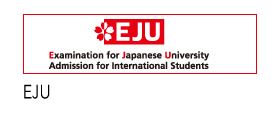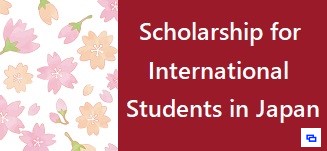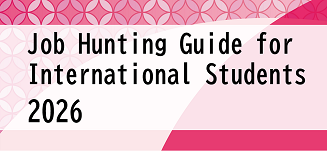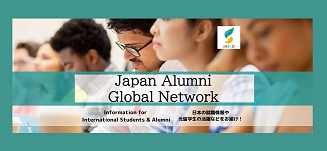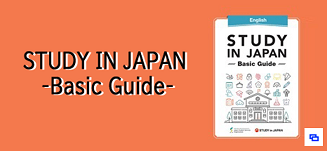Mr. Zorigbayar Tamir ※Using “Pre-arrival-Admission”
- Name of university and department for study in Japan: Kyoto Institute of Technology majored in Mechanical Engineering
- National origin: Mongolian
- EJU site: Mongolia
- EJU Examination subjects: Japanese, Science, Mathematics
- Number of schools to which Pre-arrival Admission applications were submitted: 2
- How to find the application school: The program that I entered required us to select and apply to two out of ten different schools in Japan. I applied to Kyoto Institute of Technology and one other university.
- Final education(graduated school): Mongolian University of Science and Technology
- Scholarship: Twining Program of the University
- (as of March 2023)
Study in Japan using Pre-arrival Admission program
1. Motivation to Study Overseas and Contributing Factors
I began thinking about studying abroad when I was in high school, and researched about receiving scholarship. Around that time, the “1,000 Engineers Mongolia-Japan Higher Education Engineering Development Project”, an effort supported by the governments of both Japan and Mongolia, was extended for one more year. For an aspiring engineer like myself, this appeared to be an excellent opportunity to study in Japan – a country which has continued to achieve impressive progress in engineering.
2. Reasons for Selecting Region and School, Preparations before Traveling to Japan
Kyoto, the city that I selected for my studies, is famed as the ancient capital of Japan. As a city retaining the traditional Japanese atmosphere, Kyoto makes me of being in Japan. As I am particularly fond of anime, I choose Kyoto as safe and clean city that was my impression I got from anime productions.
Weather-wise, summers in Kyoto are not excessively hot compared to my native Mongolia, while the winters are not particularly cold.
In addition, with Kyoto containing numerous sightseeing attractions, on holidays it is possible to enjoy beautiful spots without traveling very far.
|
Visiting a shrine |
3. How I Prepared for the EJU
I studied the Japanese language for two and a half years in Mongolia. During the final year of that period, I also learned mathematics, physics and chemistry in Japanese. In preparing for the EJU, I answered questions from past versions of that exam, taking time to review the questions and contents that I found difficult. For myself, while the Mathematics and Physics tests were not hard, the Japanese and Chemistry sections were quite challenging. Particularly tough was the work of memorizing the chemical terms and molecules. While the EJU was slightly more difficult than the entrance exams for Mongolian universities, the contents were largely the same.
4. Classes, Student Lifestyle, Daily Life
Although the curriculums in Japan and Mongolia are very similar, I regard the curriculum at Kyoto Institute of Technology to be extremely outstanding. In Japan, meanwhile, more experiments are conducted than in Mongolia, while I also found the ability to perform laboratory research into your own chosen specialty themes after becoming a fourth year student to be a useful approach.
Japanese peoples are very kind and considerate, and I have really appreciated their efforts in responding to my questions. When I first arrived in Japan, I get lost on the way back from school to where I lived, furthermore my cellphone battery died. On that occasion, I managed to make it home by asking people on the street for directions. I felt very happy and remains as a warm memory to this day.
On weekends, I practice with the school basketball club. That activity has also enabled me to make a large number of friends.
For my residence, meanwhile, I currently live by myself in a school dormitory.
5. Advantages of Using the Pre-arrival Admission System
For me, one nice thing about applying through the Pre-arrival Admission system was the ability to enroll at a Japanese university as soon as I arrived in Japan. During my studies at the Mongolian University of Science and Technology, I obtained permission to participate in Pre-arrival Admission solely on the basis of the entrance exam and document screening at my own school. This is an attractive opportunity for students wishing to prepare for study programs in Japan while remaining overseas.
If I had not utilized Pre-arrival Admission, studying in Japan would have required me to travel to Japan, then take and pass the necessary exams. Without taking those steps, I would have been unable to enroll at a university here. This is a severe challenge for overseas students hoping to study in Japan. Therefore, using the Pre-arrival Admission system is a very convenient and effective approach.
6. Advice for Students Planning to Use Pre-arrival Admission for Study in Japan
For anyone planning to use the Pre-arrival Admission system to study in Japan, the single most important thing is your EJU scores. This means that good preparation is needed for the EJU, and I truly recommend studying for the exam every day. I say this because the EJU is not easy in any way.
Next, at the document screening stage, you should write down and effectively express your own personal merits.
Finally, because the school to which I applied required scores in English proficiency, I took the Test of English for International Communication (TOEIC) and submitted my scores to the university. Before taking the necessary exams don’t miss to confirm the application requirements of the university that you hope to attend.



